Best Overall Lightweight Backcountry Skis
Atomic Backland 100
Weight: 1331 grams | Measured Dimensions: 129/100/119 mm
REASONS TO BUY
Sweet spot weight
Balanced performance
Widely available
REASONS TO AVOID
A little wobbly at speed
Lighter options exist
For years, our test team has mostly agreed on the ideal stats for an all-around, human-powered backcountry ski. That team is especially close in agreement when we ask them to describe a relatively lightweight all-around backcountry ski: it has to weigh between 1200 and 1400 grams and be within a few millimeters of 98mm underfoot. Every season, across nearly a decade of testing, we have had a ski top our charts that matches that description. The latest winner, the Atomic Backland 100, fits squarely in this range and takes home our highest award. The consistent performance of this ski improves upon previous winners across the board, making it the perfect all-around, all-season ski for the discerning backcountry skier.
These are not the lightest skis in our review, and you can find skis – like the Salomon QST Echo 106 – that are optimized for the descent. But no other backcountry pair hits the sweet spot of uphill efficiency and downhill performance like the Backland 100. Durability for lightweight skis is steadily improving, and we have high hopes for the lifespan of this model. As we continue to ground-truth our findings (by getting out and skiing), we are confident that these skis will help you find that sweet spot in your backcountry skiing adventures.
Read more: Atomic Backland 100 review

A well-balanced, lightweight ski like the Backland 100 is plenty capable of delivering the goods on a deep day, like this one in the Teton backcountry.
Credit: Jediah Porter
Best Overall Mid-Weight Backcountry Skis
Blizzard Zero G 105
Weight: 1513 grams | Measured Dimensions: 133/104/118 mm
REASONS TO BUY
Versatile
Forgiving
Reasonable weight
REASONS TO AVOID
Compromised firm snow performance
Others are lighter
The Blizzard Zero G 105 is the best mid-weight all-around backcountry ski we have tested in recent years. It does everything very well, especially considering its weight. At 1500 grams, many lighter options are available, but the models we’ve tested ski more poorly than the Blizzard. Heading in the opposite direction, one must add on a couple hundred grams of mass per ski before matching or exceeding the ski performance of this award winner.
The real and definitive measure of an all-around ski for human-powered use is the ratio of weight to performance. In this metric, the Zero G 105 shares the top of the heap. For a long time, we have selected two highest award winners; one super light and the other “normal” light. The Zero G 105 takes the lead as the “normal light” winner. The main tradeoff for performance is in firm snow. It doesn’t grip quite as smoothly or confidently for an all-around ski as we would like. Even though the Zero G 105 does well enough, a slightly more narrow ski like the Atomic Backland 100 performs better in these conditions.
Read more: Blizzard Zero G 105 review

The award-winning Blizzard Zero G 105 arching some beautiful turns high in Alaska.
Credit: Jediah Porter
Best Bang for the Buck
K2 Wayback 106
Weight: 1537 grams | Measured Dimensions: 135/107/123 mm
REASONS TO BUY
Long pedigree
Balanced downhill performance
Optimal weight
REASONS TO AVOID
On the wide side of versatile
Super damp
The K2 Wayback 106 is our latest value recommendation for all-around, all-season human-powered backcountry skiing. It offers well-balanced performance across the entire spectrum of backcountry conditions, comes in at a reasonable, competitive weight, and is priced and available for optimal value. The dimensions are relatively wide for all-around backcountry skiing, but performance keeps up, and many folks are accustomed to skis in this size range for all-season use. A few millimeters narrower would save weight and increase versatility, but we aren’t really complaining.
Pinpointing backcountry ski price deals is a challenging task. For starters, the original retail prices of skis don’t vary as much as other consumer goods. Second, the periodic changes in models and graphics mean that older skis frequently turn over at great prices with little to no compromise in function. Nevertheless, to take the top honors as a budget buy, we look for a good intro price, relative durability, all-around performance, and wide availability. The K2 Wayback 106 checks all those boxes, but so do other models, like the Elan Ripstick 106. So shop wisely.
Read more: K2 Wayback 106 review

The weight of the Wayback 106 strikes a nice balance between handling big climbs and romping downhill performance.
Credit: Jediah Porter
Best for Deep Powder Skiing
Voile HyperDrifter
Weight: 1565 grams | Measured Dimensions: 154/121/138 mm
REASONS TO BUY
Huge
Familiar and predictable in soft snow
Wicked light for the size
REASONS TO AVOID
Abysmal, terrifying hard snow performance
Require big, heavy skins
The Voile HyperDrifter is the most sizable model in our review but leans towards the center regarding weight. This is a great balance if you seek (and actually find) enough truly deep powder snow to justify dedicated powder touring skis. If you are fortunate and good enough to track down that amount of soft snow via human power, you can’t do better than the HyperDrifter. As the biggest ski we have tested, it stands out. We love it for the deepest days and when the pitch is low and the snow is soft.
Many skis on the market make it fun to ski in powder. But let’s first examine what makes for great powder skiing. The slope needs to be steep enough to carry speed, and the snow has to be deep, soft, and graduated but not so deep that it bogs you down. Big skis like the HyperDrifter can help you carry speed on gentler terrain, making those days more enjoyable when you have to stay out of the steeper country. Furthermore, it can sometimes be too deep to ski. On those rare and comically strenuous days, huge, light skis like the HyperDrifter will set you up right. These circumstances are pretty narrow and ones in which your all-around backcountry skis will also function. You choose the HyperDrifter to complement all-around skis like the Black Crows Camox Freebird and know precisely when these specialty sticks benefit you and when they don’t.
Read more: Voile HyperDrifter review

This is what the Hyperdrifter was made for: low-angle, high-speed powder skiing.
Credit: Jediah Porter
Optimized for Downhill Performance
Salomon QST Echo 106
Weight: 1779 grams | Measured Dimensions: 140/105/125 mm
REASONS TO BUY
Damp, even longitudinal flex
Torsional rigidity
Balanced
REASONS TO AVOID
Heavy
Softer longitudinal flex
When you want to make the most of every backcountry ski descent, the Salomon QST Echo 106 is the one you want. The stability combined with the downhill performance makes it an ideal pick for intermediate downhill skiers seeking to hedge their bets in wild snow. And yet, it is just as fun for expert backcountry skiers who really want to maximize their fun on the downhill and don’t mind a little bit of a weight penalty to reach that goal. The mass, dampness, and combination of torsional stiffness and longitudinal flex seem to come together to ease soft and firm snow performance while smoothly transitioning from low angle and fast to steep and techy. It almost doesn’t matter what snow conditions or terrain you encounter; the QST Echo 106 will ski better than most.
Despite being among one of the “softest” skis we tested, the QST Echo 106 is a good example of foiled generalizations. It handles firm snow as well as hardpack, but that downhill performance comes at a price. The Echo 106 might be lighter than Salomon’s resort options, but it is significantly heavier than optimized backcountry skis that balance uphill efficiency with their downhill prowess. You can shave off over 400 grams per ski by choosing a model like the Atomic Backland 100, with only a minor tradeoff in overall stability. Like all things in life, choosing a backcountry ski is a balance of factors. But if your priority is having fun on the downhill, then the Echo 106 is our top pick.
Read full review: Salomon QST Echo 106
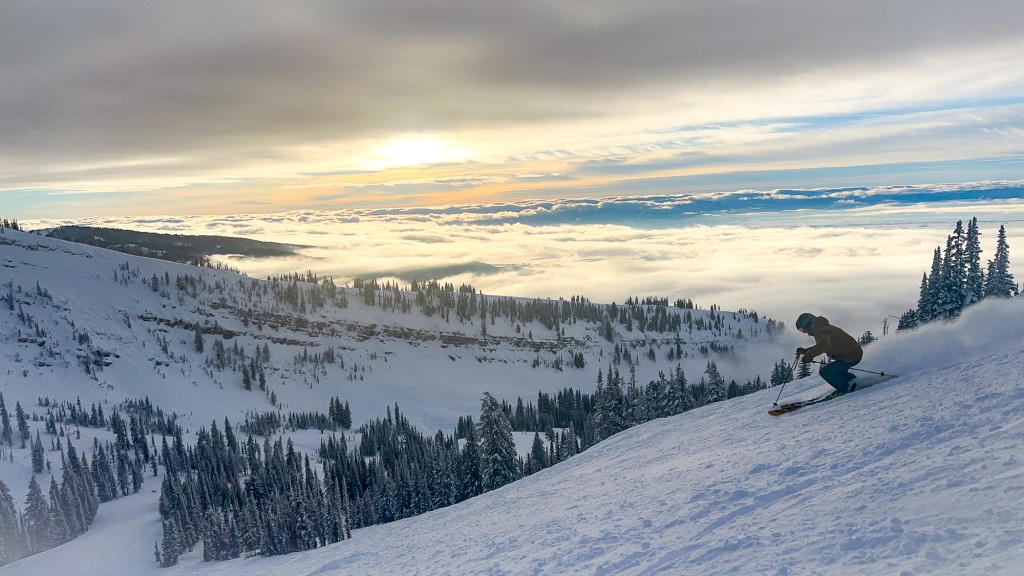
For intermediates and experts alike, the Salomon QST Echo 106 makes for a fun descent.
Credit: Jediah Porter
Compare Products

Careful selection of your skis (and other gear. And deliberate training and acquisition of skills…) will get you to places like this under circumstances like this. Git some!
Credit: Jediah Porter
How We Test Backcountry Skis
We have been testing backcountry skis for nearly a decade now. We’ve tested dozens of ski models, some of them in multiple iterations and most over multiple seasons. We test all winter, spring, and early summer (with periodic visits in Austral spring to South America) to have excellent and relevant reviews ready for the beginning of the North American ski season. This means that all our testing, unlike some other reviews, is done on production equipment that we purchased and that has seen a full gamut of conditions and terrain. It also might mean that we just can’t get you a full review of this year’s “hot new” product before it’s released. We put these skis through a rigorous side-by-side testing process to see how they perform, hitting the slopes in powder, firm, and poor snow, paid attention to their stability, and weighed each pair. See our full How We Test article to learn more about our testing processes for these skis.
Our testing of backcountry skis is divided across five different metrics:
- Weight (25% of total score weighting)
- Firm Snow (20% weighting)
- Crud and Poor Snow (20% weighting)
- Stability at Speed (15% weighting)
Why Trust GearLab
For many seasons now, Jed Porter has led our backcountry ski testing team. He tests all the skis, administers sharing and comparing with the rest of the team, collects the data, and prepares each final report. Jed is, first and foremost, an adventure skier. He has tromped through winter wildernesses since the mid-1990s on three continents, millions of vertical feet, countless face shots, and a handful of first descents. He is also a full-time, year-round Mountain Guide. About half the year, he takes people on gritty, human-powered, steep-and-wild ski adventures, and the other half is spent in all types of climbing. Jed’s guiding acumen is recognized in certifications from the American Mountain Guides Association and the International Federation of Mountain Guide Associations.

Mount Shasta’s Hotlum-Wintun ridge and ski testing. We cover millions of vertical feet of real backcountry skiing, mainly for fun but also to generate reputable review content.
Credit: Jediah Porter
We collect a passionate team of skiers to help Jed and to complement his perspectives; dozens of skiers have helped over the years. Currently, the entire team is located in the Teton Region. We ski Grand Teton National Park, Teton Pass, and the Targhee backcountry close to home and venture further afield into the various ranges of the Greater Yellowstone region. Spring and early summer travels take us all over the North American West.



Analysis and Test Results
As the sport’s popularity explodes, gear increases in both quality and quantity. To sort through all the gear options is a bear of a task. We narrowed an expanding field of skis by selecting those intended for use in moderate to steep backcountry terrain, designed to be general-purpose mountain tools, and of moderate width and weight, relatively speaking. Shapes and designs vary, but all of our tested skis are lightweight, forgiving of a variety of snow conditions, and sized between 80 and 121 mm underfoot. Those 80 mm and 121 mm skis are outliers. The vast majority of our tested skis are between 95 mm and 110 mm underfoot.

Backcountry skiing comes in all flavors. Here, glacier ski touring deep in Denali National Park.
Credit: Jediah Porter
We mostly target general-purpose equipment rather than specialty products. We tested the skis with modern, tech-style alpine touring bindings, some of the top backcountry ski boots on the market, and good technique. This style of skiing and equipment allows the user to climb with heels free and descend with them locked.
In doing this formal testing (and collecting a team with hundreds of years of accumulated experience), we have learned a great deal about what constitutes a great backcountry ski. Backcountry skiing is strenuous, at times dangerous, and takes place in a fully uncontrolled environment. As our primary interaction with the snow, our skis can have a significant influence on our experience. Every ski we reviewed is excellent. Some are better in certain ways and under certain circumstances, while a select few truly stand out from the rest.
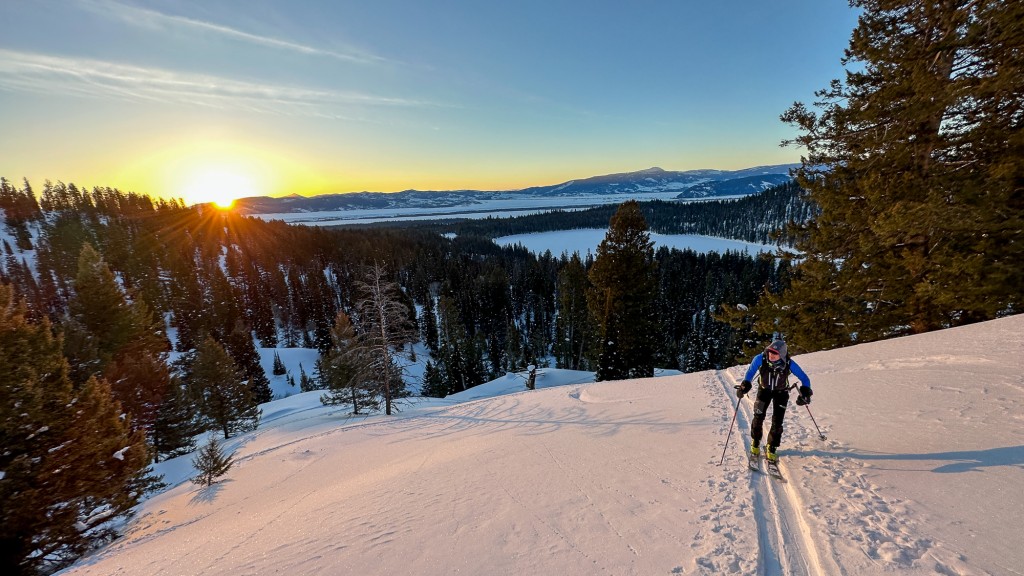
Sunrise behind, hours of mountain passion ahead. This day, a high altitude, high pressure day in early spring, was great for testing ski performance in tougher conditions.
Credit: Jediah Porter
Dream Backcountry Ski Quiver
We have been asked for an outline of our dream backcountry ski quiver. We test lots of skis and have many options at our disposal. We also ski a lot in a variety of conditions and settings. Sometimes, it feels as if we are faced with infinite options for skis and ski gear pairings. The answer to an “ideal” ski quiver isn’t necessarily “infinite”; there is such a thing as too many skis. It takes some time to get used to skis, either when using them for the first time or when switching from a different option. Few people ski as much and in as varied of settings as our lead tester, Jed Porter. Jed chimes in here with his ideal backcountry ski quiver, which is a dream five-ski system:
Little “Go-Fast” Skis
These are small, like skimo race skis, but slightly bigger, heavier, and more durable. He uses these for huge missions on relatively firm snow. Jed has done one skimo race (in 2005) but has worn out a few pairs of skimo race skis. They’re weird, but when they are right for the job, it’ll blow your mind.
Big-Mountain “Sending” Skis
80 to 90 mm underfoot and around 1000 g per ski. Right now, he’s digging the Dynafit Blacklight Pro. He uses these for fast ascents and descents “in a day” in the high Tetons and long traverses in more distant ranges.
100 mm Lightweight, All-Around Skis
The Atomic Backland 100 is great for everything from Shasta corn to bottomless January Teton Pass powder.
100 mm Mid-weight, All-Around Skis
These are what he uses for day-to-day ski guiding in varied conditions and terrain, and is also the ski to travel with. This is as close as you’ll get to a backcountry “quiver of one.” The Blizzard Zero G 105 will last for hundreds of thousands of vertical feet and can hang in absolutely any circumstance. They’re heavier than what he wants for the longest days, but the downhill performance is hard to complain about.
Giant, Lightweight Powder Skis
Jed loves the Voile HyperDrifter. It is almost 20 mm wider than the Zero G 105 but weighs about the same. On the absolute deepest days, especially when avalanche conditions confine us to low-angle terrain, giant powder skis like this enable fast and floaty enjoyment. Skis this big perform well at almost any weight. Get ’em lightweight for more vertical. You’ll hardly notice the low weight on the downhill.
Value
At OutdoorGearLab, we’re keen on making sure we test the best of the best. The cream of the crop, if you will. For good measure and because we all like high-value gear, we highlight the products that score toward the top of the pack while also providing a massive bang for your buck. As such, the K2 Wayback 106 packs a punch at a reasonable cost.
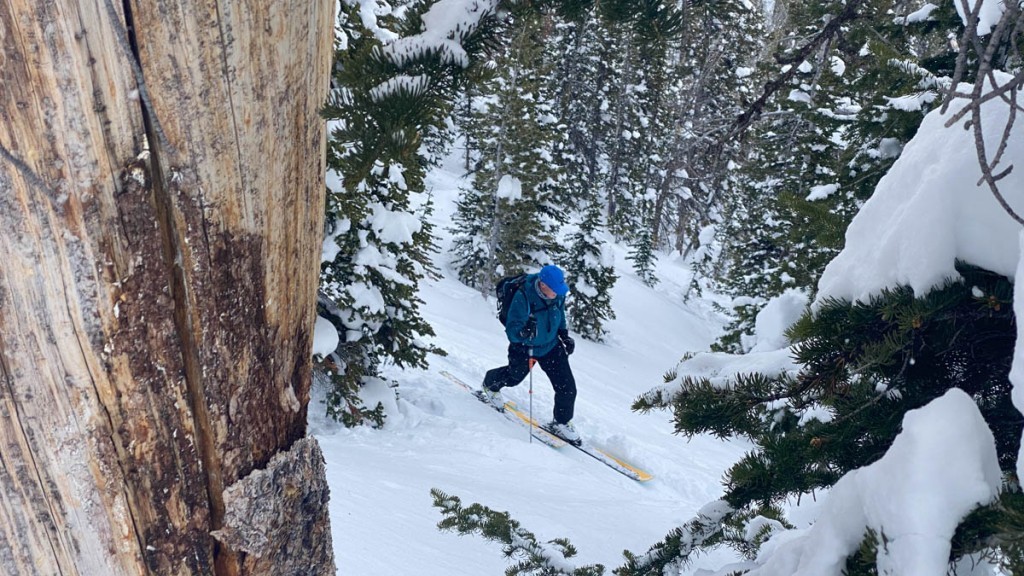
The Wayback 106 in action on an amazing Teton powder day.
Credit: Jediah Porter
Generally speaking, ski shopping for value is a bit tilted. The highest-priced models are indeed at least a little better. And yet, ski performance at the lower and middle price ranges is largely independent of cost. There are both good and poor skis across the low to mid price ranges. Moreover, excellent deals are regularly available, mixing up any generalization one may draw from the suggested retail price listed by the manufacturer.
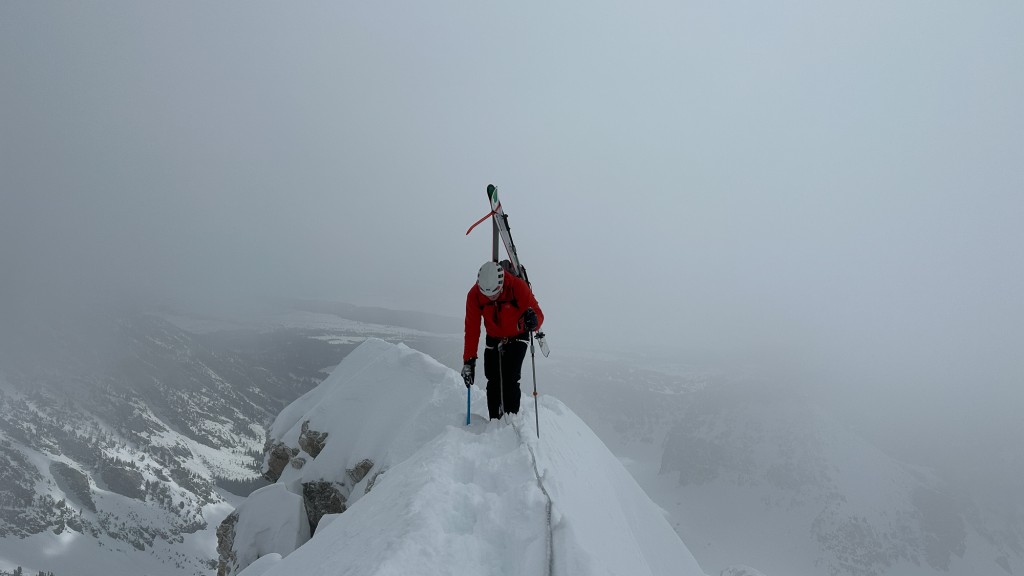
Ski mountaineering ascent of Wyoming’s Buck Mountain. We skied steep, soft snow and learned some things about stability at speed on the exit.
Credit: Jediah Porter
Weight
Weight is the only backcountry ski criterion that directly correlates to uphill performance. It is no coincidence that it is also the single most heavily prioritized criterion in our assessment. You will spend a great deal of your backcountry skiing day and career going uphill. In evaluating weight, we did more than simply cite weight. First, we weighed the skis without bindings on them. Because of manufacturing differences and marketing pressures, claimed weights are sometimes different than actual. Even two different skis of the same make, model, size, and pair can have different weights. We make that data available to you.

Much of your ski day is uphill. Choose gear understanding this important fact.
Credit: Jediah Porter
We found up to a 4% difference in weight from the left to right ski of the pairs we tested. Even after we scoured the market for the best lightweight backcountry-specific skis, we still ended up with significant variability in ski weights. The heaviest product in our test is more than 2x the weight of the lightest. Before you dismiss lightweight skis as only for “touring dorks,” consider that essentially all the rowdiest classic ski lines on the planet have been skied with “skimo” race gear. You have to adjust your technique and ride more slowly, but the lightweight gear can go a long way.
Weight scores were distributed based primarily on measured weight, but consideration was also given to color and width. The wider the ski is, the wider (and thus heavier) the skins need to be, and the more snow can accumulate on its top sheet while skinning. Dark-colored skis heat up more than lighter skis in even partial sun. This warmed top sheet melts a little bit of snow into water, absorbing and refreezing even more collected snow. The Movement Alp Tracks 100 is impressive for its balance of uphill weight (1271 g per ski) and all-conditions downhill performance. The award-winning Atomic Backland 100 brings solid downhill performance to an ultralightweight point.

“Ski Mountaineering”. You might picture one thing, but this is sometimes the reality: rappelling, with skis on, while spindrift pummels you right in the face. You don’t want to be thinking about your skis in this situation. Or before it. Or after it. Choose wisely.
Credit: Jediah Porter
The K2 WayBack 80 and Dynafit Blacklight Pro are two more of the ultra-lightweight models tested. The dimensions and performance of the Black Diamond Helio Carbon 104 and Dynastar M-Tour 99 lend them higher all-around performance than the ultra lighters. In terms of weight, these could be considered lightweight all-rounders and suitable for all-purpose touring.

Beginning ski tourers, especially, can benefit from lightening their kit. Unfortunately, many start out with backcountry set ups that are way heavier than needed.
Credit: Jediah Porter
In the middle of the pack weight-wise is the Black Crows Camox Freebird, Blizzard Zero G 105, K2 Wayback 106, Voile HyperDrifter, the Black Diamond Helio Carbon 115, and DPS Pagoda Tour 100 RP. These represent, currently, the weight of your standard touring ski. Light enough to lug around, wide enough to power through poor snow, and (mostly) versatile enough to take anywhere. It is at this weight class that solid, reliable performance meets reasonable weight. If and when this degree of downhill performance trickles down to even lower weights, we’ll be even more stoked.
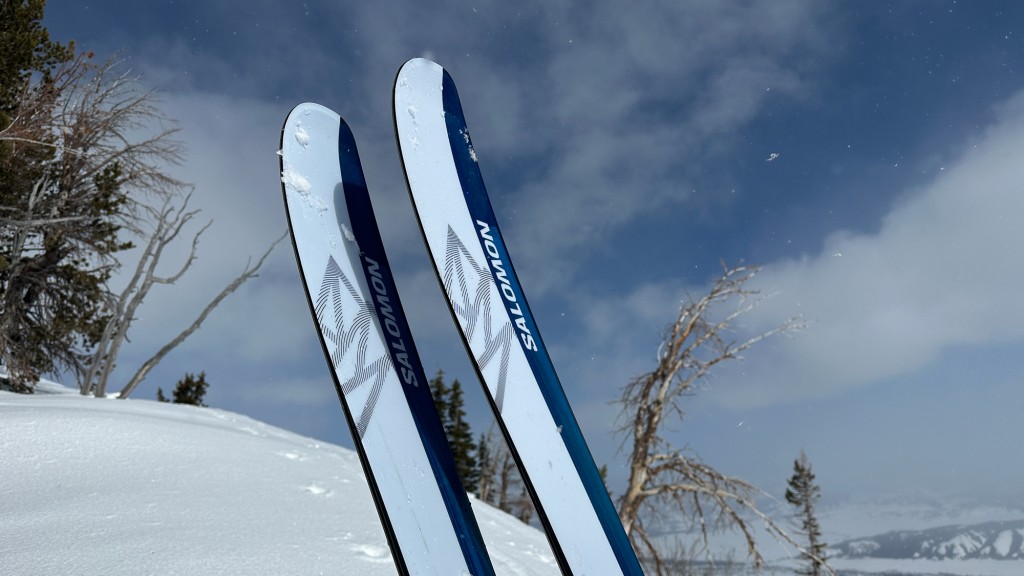
You might justify heavier touring skis. If so, do so carefully and make sure you are clear to yourself about all the pros and cons. If you really want more forgiving downhill performance, check out the Salomon QST Echo 106.
Credit: Jediah Porter
Finally, the heaviest skis in our test, all coming in over 1600 grams per ski and listed in order from lightest to heaviest, are the Black Crows Navis Freebird, Kastle TX 103, Salomon QST Echo 106, Elan Ripstick 106, and Black Crows Corvus Freebird. These are solid performers but live in a weight class that preempts acclaim in the world of the human-powered backcountry. These heavier ski models are good to excellent downhill skis that are branded to tour.

Daily powder touring, as conducted by the Teton ski guides on our test team, rewards light skis with just a little girth. The Movement Alp Tracks 100 is just right.
Credit: Jediah Porter
We also calculated the weight-to-surface area ratio of each ski in grams per square centimeter of ski base surface area. This ratio helps to compare construction methods and materials because it normalizes for actual ski size. Long and wide skis will be heavier than short and narrow. If you wish to compare skis of radically different dimensions, this number can help sort them out. Elsewhere on the web, you will also see surface-area-to-weight numbers generated.

We confine our discussion of ski performance to notes on ski performance. It would be easy to attribute performance to construction attributes, materials, and dimensions, but this oversimplifies the matter.
Credit: Jediah Porter
Firm Snow Performance
Firm snow in the backcountry is either formed by melt-freeze metamorphosis, which we call corn, or by wind transport, which we call wind board. As the backcountry becomes more and more crowded, we’re also seeing firm snow in the wild as a result of “skier compaction.” The firmest expression of these can be called ice (unless you ski on the East Coast of the US, where “it’s not called ice unless you can see fish underneath”). Corn snow, in its softer phase, is one type of hero snow. Turning in perfect corn snow is almost effortless. Like in perfect powder, differentiating between skis on corn snow is challenging; all are fun. In the firmer manifestations of snow, ski performance varies drastically. Stiffer is better, while narrower feels more predictable and less strenuous. Weight also helps.

Firm snow isn’t always steep and extreme. This high and wild, rock-hard spring (in California’s historic 2023 season) tour was quite the test for hard snow performance, and we never skied “no fall” terrain.
Credit: Jediah Porter
Our favorite firm snow skis were narrow. As ultralight ski mountaineering specialists, the K2 Wayback 80 and Dynafit Blacklight Pro do really well on any firm conditions, high volume, and high-speed ski mountaineering endeavors.
Mid-width, “all-around” skis can do pretty well in firm stuff. It is especially important to pair these mid-fat skis with beefier boots on firm snow. You can get away with light boots in soft snow, but harder snow requires stiffer boots. We’d put the Dynastar M-Tour, Movement Alp Tracks 100, Atomic Backland 100, Kastle TX 103, Black Crows Camox Freebird, and DPS Pagoda Tour 100 in this category. You wouldn’t choose any of these for pure firm snow skiing, but you won’t be let down when you encounter that with these. The K2 Wayback 106 does better on firm snow than its weight and width numbers would suggest. With similar numbers to the K2, we expected similar (compromised) firm snow performance from the Blizzard Zero G 105. Indeed, it doesn’t carve and grab like a narrower, stiffer ski, but it suffices. The Black Diamond Helio 104 isn’t anything special on firm snow, either.

Ultimately serious firm snow skiing. Huge pack, high altitude, steep terrain, very long “run out”. Belayed skiing in Denali’s “Rescue Gully”.
Credit: Jediah Porter
The wide and light skis exert great leverage without the mass and stiffness to back it up. These are best kept to slow speeds when the firm is encountered. We’re mainly talking about the Voile HyperDrifter and Black Diamond Helio Carbon 115. If you “luck” into hard snow on the HyperDrifter or Helio, you will quickly revert to survival skiing skills and techniques. The Helio is slightly better than the Voile, but not by enough to affect any meaningful decision-making.

Springtime means waning coverage and firmer snow. Go narrow or go heavier, like the Corvus Freebird, just don’t try and ski wide and light skis on firm snow.
Credit: Jediah Porter
The big and wide Black Crows Corvus Freebird and Elan Ripstick 106 do surprisingly well on firm snow. All that weighty material lends smoothness and torsional stiffness. Many accomplished skiers love the firm snow performance of the Black Crows Navis Freebird. Our test team was split; some liked them on ice, while one tester found them grabby and unpredictable.

We liked the Atomic Backland 100 in all flavors of snow. Including firm and steep ski mountaineering.
Credit: Jediah Porter
Powder Performance
All the skis we tested are a ton of fun in powder snow. This is a reflection of the nature of powder skiing and the fact that modern skis are so well-designed. Wide or narrow, stiff or floppy, rockered or not, good skis combine with good powder snow to make for a transcendent experience.
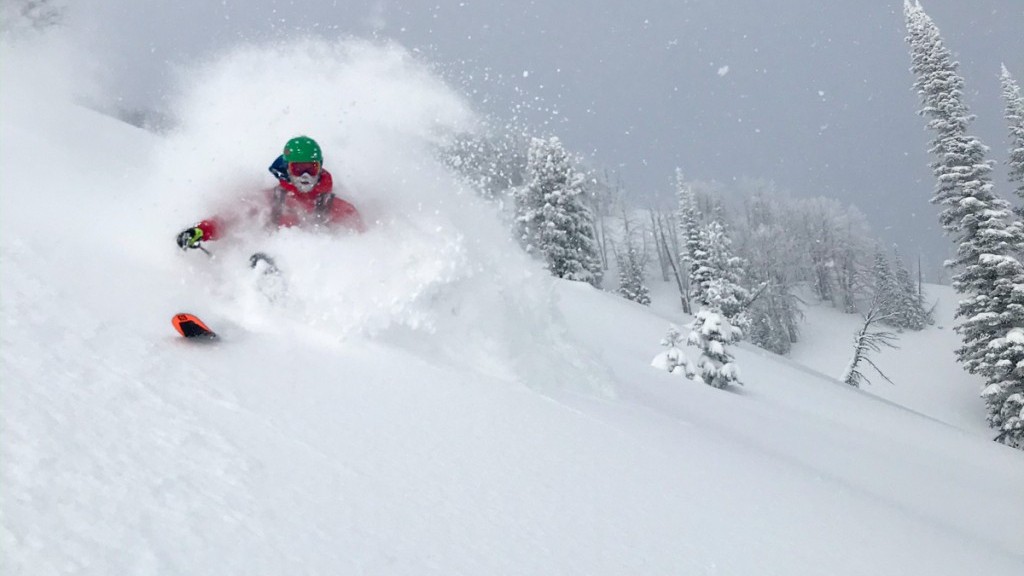
We all love perfect powder skiing. Pretty much all modern backcountry skis love perfect powder skiing.
Credit: Jediah Porter
We must give a mention here of the Voile HyperDrifter. This cambered ski excelled for us in powder. It was a lively ride that positively popped up and out of the fluffy between each silky turn. The enjoyable performance kicked cold pow in the face of convention. “Common knowledge” would hold that the camber construction would be a liability in the soft. Not so, in our experience. This single data point hints at the issues with generalizing dimensions and construction type.
While every ski did well in the powder, we have to give a special mention to the dedicated powder tourers. The Atomic Backland 100 are ultralight tools with above-average girth and dimensions tuned for soft snow. They perform very well on good snow and do so with minimum weight. For your overall touring day, ultralight construction is a significant advantage. The huge Voile HyperDrifter is a powder hog; just be sure to put it away when the snow gets tough or firm.

Black Diamond Helio 104, deep and deep and steep on the west side (best side?) of Wyoming’s Tetons. In this case, though it isn’t real clear here, some of the trickiest skinning we encountered all season. The skiing, though, was near perfection; perfect enough to make even these otherwise unremarkable skis perform well.
Credit: Jediah Porter
The Atomic Backland 100 snaps quick powder turns and rails higher-speed soft snow carves. We tested it in a relatively short 180cm length. For steep skiing and firm snow, this was just the right length. At high speeds in soft snow, we found ourselves wishing for more length for even better float and stability. If you are on the fence between two sizes of these, consider our experience as you choose.

The Atomic Backland 100 staring down a thousand feet of roll-over, bottomless, rock-wall-lined high Teton Couloir perfection.
Credit: Jediah Porter
The big gun Black Crows Corvus Freebird charges long radius powder turns like a train on tracks. If you want or need to slow it down and make three-dimensional, bouncy, short-radius turns, the Freebird requires more input than some of the others.
Most of the “mid-fat,” light-to-average weight touring skis in our test are more enjoyable in powder than you would first guess. We gladly grab the Dynastar M-Tour 99, Pagoda Tour 100, Black Diamond Helio 104, or Kastle TX 103 for powder days.

What job is better than testing the powder performance of backcountry skis? We’re not really sure, but we aren’t ready to take time off of the current job to investigate further.
Credit: Jediah Porter
Crud/Poor Snow Performance
This is our favorite review category. Not because we like skiing crud and poor snow, but because it’s here that a product can truly make itself known. As mentioned above, in great snow, whether powder or corn, all modern skis are fun and perform well. At speed and in the steeps, stable and firm snow-tuned products start to stand out. However, when the snow inevitably gets breakable or sloppy, it separates the wheat from the chaff. This applies to skis as well as skiers. We can’t change your skiing over the internet, but we can help you get products that smooth the rough.
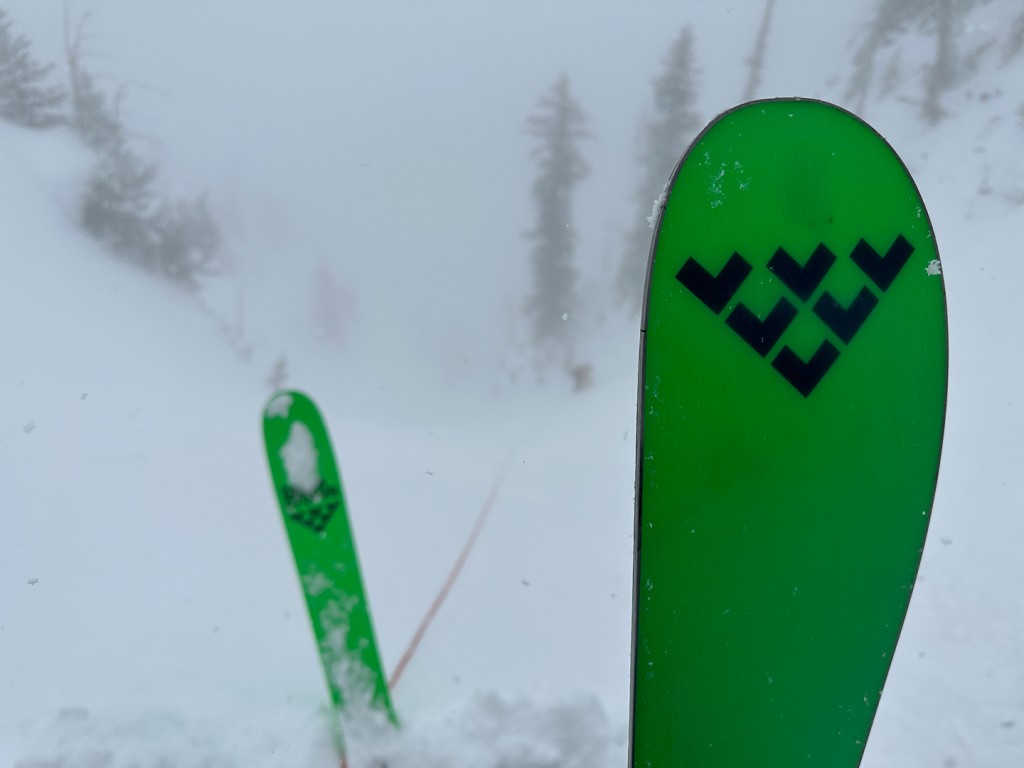
Black Crows Navis Freebird, being tested. In this case, a photo grabbed during a training exercise in “belayed skiing” in amazing, deep powder conditions in the Tetons
Credit: Jediah Porter
Overall, we found a significant range in poor snow performance. We separated our scoring into breakable crust and slop or mashed potatoes. Generally, those that did well in one did at least okay in the other, and vice versa. Both of these general snow types reward similar attributes. The rider wants equipment that comes up reliably out of the snow and turns gently and readily. Tips, tails, and edges must engage and disengage with the snow smoothly with little grabbing or hesitation. We can make some construction generalizations but must do so cautiously. The wide, heavy, and rockered Black Crows Corvus Freebird and Elan Ripstick both perform amazingly in bad snow. However, the narrow, lighter, and more traditionally profiled Dynastar M-Tour 99 also compares favorably, especially considering their weight. The Blizzard Zero G 105 is great in tough snow conditions. A ski can’t get to top award status without excellent bad snow performance.
While ski resort riders may spend a considerable percentage of their time on the same home mountain, backcountry aficionados are inherently explorers. Even in one’s home range, the goal is often to see new terrain under new conditions. Not to mention, of course, the appeal of traveling further afield to backcountry ski. Even if, for argument’s sake, one were to go to the same backcountry ski slope every time out, one would encounter different conditions each time.

Backcountry skiing isn’t always vistas and magazine-centerfold snow. Sometimes it is ice and rime. Heck, a lot of the time it is suboptimal. Shop as much for what you will ski as you do for what you want to ski.
Credit: Jediah Porter
The versatility of your backcountry equipment is crucial. In evaluating versatility on variable snow conditions, we looked at downhill performance in all kinds of snow. Most will want their one pair of backcountry skis to be able to shred powder on 25-degree Berthoud Pass laps just as well as ski off the summit of the Grand Teton. You are likely to encounter poor snow in any of these endeavors, and your equipment must be ready for this.

This windswept day and peak in Western Wyoming was great testing of skis’ poor snow performance. The pictured K2 Wayback 106 does slightly better than most.
Credit: Jediah Porter
The Atomic Backland 100 is a breakable crust champion, for the weight. The Black Crows Camox Freebird and Navis Freebird are both in the same category; their poor snow performance earns high marks. We had a hard time in tough snow with the Voile HyperDrifter. They do well enough, but nothing special. The narrow and ultralight skis also battled in tough snow. Unsurprisingly, mass and girth help with tough snow.

Ski mountaineering in the alpine of Grand Teton National Park calls for skis that can handle variable snow.
Credit: Jediah Porter
The DPS Pagoda Tour 100 does surprisingly well, especially for the weight, in tough snow conditions. But our all-time favorite ski for tough snow is very different from the Pagoda. The award-winning Salomon QST Echo 106 is a great tool in bad snow. You pay for it with greater weight, but some don’t mind the extra effort on the uphill.

Big ski mountaineering days mean skiing all the conditions, and at least some of those conditions will be difficult to poor.
Credit: Jediah Porter
Stability at Speed
A ski’s stability determines the user’s comfort at speed and the rider’s security when landing steep jump turns. These seemingly different activities reward the same attributes. Damp (basically, damp skis deflect from their path less readily than less damp ones), stiff, and heavy skis are the most stable. In our testing, the same skis we wanted to go fast on were the same ones we could jump around on in steep, chunky snow. Heavier skis like the Salomon QST Echo 106, Black Crows Corvus Freebird, and Elan Ripstick 106 are more stable than the lighter ones. These are outliers, weight-wise. We have to note the admirable stability of each at top speeds; weight and stability are closely correlated. Again, the greatest determinant of stability (and other downhill performance attributes, for that matter) is weight. The mass of a ski is part of its downhill performance.
Carbon fiber helps temper the stability of lightweight skis. Carbon fiber stiffens the ride without dramatically increasing the weight. Heavy-ish skis with carbon fiber in them replicate the stability of the heaviest skis at a lower mass. In times past, lightweight skis would noodle around terrain and snow conditions. Modern, lightweight skis built with carbon fiber, like the DPS Pagoda, Dynastar M-Tour 99, Atomic Backland 100, and Black Crows Camox Freebird, can push right through almost as well as the more massive ones. No matter what technology is included in a ski, mass directly relates to stability. The lighter skis won’t be as stable as the heavier ones, all else equal. A carefully constructed light ski, of course, will out-ski a sloppy, heavier one.

Ultimately, this is what it is all about. Deep wilderness, spectacular sights, stimulating exertion.
Credit: Jediah Porter
Conclusion
We have ten years of backcountry ski review experience. This year, we added six brand new skis and revisited and retested a handful more, for a total of 15 skis. Each of these has seen miles of vertical gain and descent in a variety of conditions and with a representative test team. We assess each for weight, firm snow, powder snow, poor snow, and high-speed stability. Each ski gets at least a dozen hours of testing attention. Most of that testing is in real backcountry skiing in real human-powered situations.


